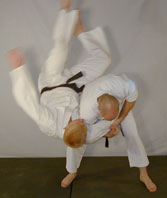I understand. but the point remains as to whether an evolution would consciously or not remove a tradition of blocking to the left side which would have been the non weapon / weaker side more likely to be attacked.
I don't see why a change would be made to the opening move to get to the left side of the opponent rather than the right. The advantages of moving to the outside of a right-handed attack (inferring stepping to the left to defend) seem to me obvious.
However:
Some opening moves in a form might be against a two-handed attack, in which case it may not really matter which side the defender steps to first.
Sanchin (a staple in goju and isshinryu styles) kata steps in first with the right side, so is an exception in this regard.
Naihanchi (tekki in shotokan) in most styles, steps to the right to start, but my style begins the form going to the left (perhaps reflecting founder Tatsuo Shimabuku's time with Choki Motobu, who may be considered a stylist from the Tomari area tradition of Okinawa). But since this form mirrors itself (doing it first to one side, then exactly repeating itself going to the left, it really doesn't matter since both sides are practiced equally.
Another complication is that while some form's openings are just that, kind of just "get ready" moves, while in other styles/forms, that opening is actually part of the first technique.
And who's to say a form's opening isn't against a left attack, or that the defending move would work well with either side? So, this whole question may be moot - the real answer (as in many other TMA questions) being "Who knows?"

 www.sciencedirect.com
www.sciencedirect.com



